
- Product

- Pricing
- Affiliate Program
- Use Cases
- Resource

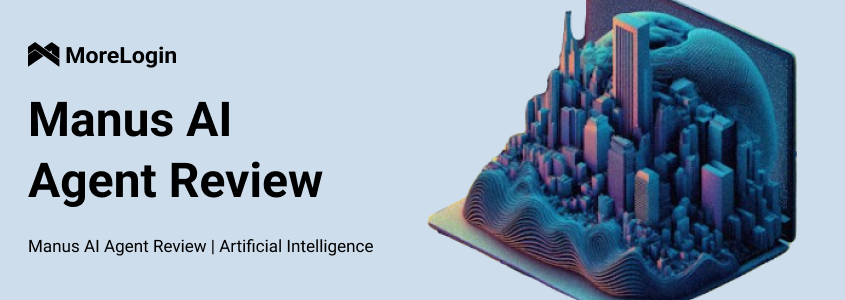
In 2025, artificial intelligence evolved beyond simple chatbots and content generators. A new class of solutions emerged — AI agents. One of the most notable representatives of this trend is Manus AI.
From the start, the tool attracted significant attention: early access was sold in closed auctions for substantial amounts. Social media and professional publications discussed the bold claims by the developers that Manus could replace not only programmers but also certain business process automation experts. Unusual use cases surfaced, including applications by entrepreneurs, analysts, and content creators.
However, not everyone shares the enthusiasm. Critics point to limitations — failures in complex scenarios, handling incorrect tasks, and difficulties with non-standard requests. This raises the key question: Is Manus AI a true revolution or just another hyped interface?
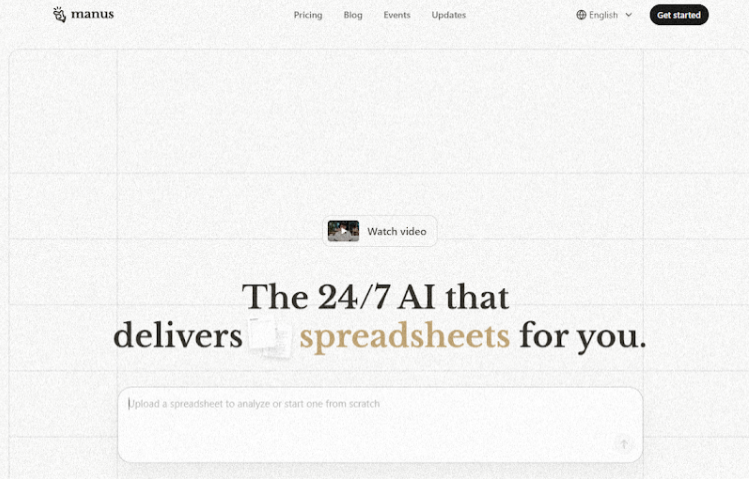
Manus isn’t just another ChatGPT-style chatbot. It’s a full-fledged AI agent developed by the European team Aurora Labs. Its main distinction: it doesn't just generate text — it performs real-world actions autonomously.
Effectively, Manus acts as a digital assistant capable of:
Opening websites
Collecting and analyzing data
Writing and debugging code
Generating presentations and business reports
Thanks to integration with the anti-detect browser MoreLogin, Manus can manage multiple accounts and web services — crucial for automation involving internet interactions.
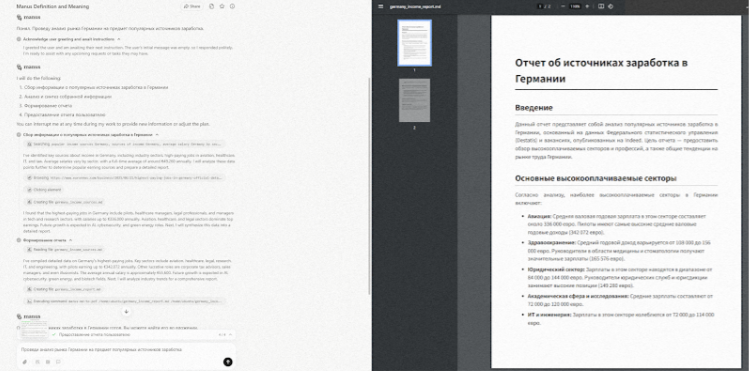
The key feature: it only needs the initial task prompt. Manus then independently builds and executes the action plan. Users can intervene and adjust the workflow, but the default logic is fully autonomous. In testing, processes that took hours manually were reduced to minutes.
Manus supports three working modes:
Classic Chat
AI Agent Mode
Adaptive Mode (selects the optimal strategy based on the task)
According to Aurora Labs, Manus outperformed competitors like Deep Research in the GAIA benchmark — a test for evaluating agents’ reasoning and internet navigation capabilities.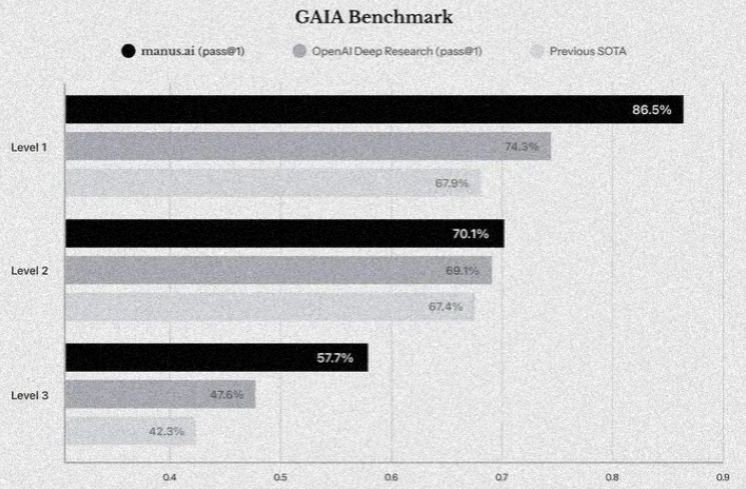
That said, in chat-only mode, Manus is limited and resembles LLM-powered search engines like Perplexity. It doesn’t create unique content but summarizes and structures found data — suitable for reference queries, not for creativity.
The real power of Manus reveals itself in agent mode.
After receiving a task, Manus:
Builds an action plan (e.g., data search → analysis → output)
Executes each step sequentially
Displays the process in real time (visible websites, extracted data, etc.)
Users can intervene at any point — if the system goes off track, corrections are made instantly in chat, and the plan is rebuilt.
Scheduled execution is also supported: daily, weekly, or on a custom schedule. For example:
Daily Telegram summaries of new features in ad networks
Extracting data from specific websites
Delivering it as audio/text reports
Let’s say a media buyer wants to launch a betting campaign in India but lacks insights. A prompt might look like:
“Collect all data on Vietnam. Planning an ad campaign and need audience insights, especially men aged 18–45.”
Manus analyzes multiple sources (blogs, forums, analytics, stats) and generates a structured report: audience traits, market data, recommendations for targeting creatives.
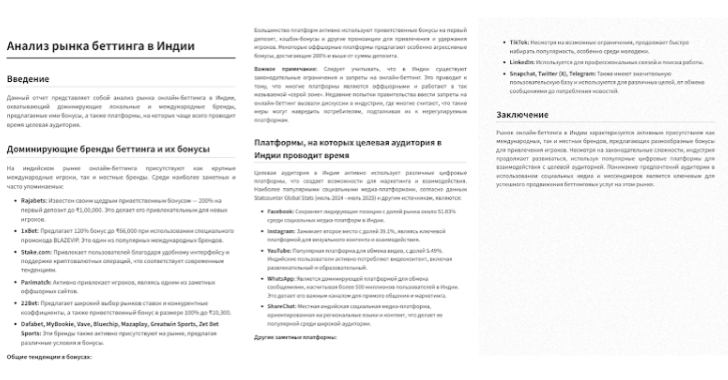
Suppose nutra-offers stopped converting. You could prompt:
“Analyze 10 health/weight-loss forums. Identify 15 recurring user problems (e.g., 'no motivation to exercise', 'hard to quit fast food'). Based on these, propose 5 ad angles for a weight-loss supplement. For each angle, write 2 Facebook ad headlines and texts.”
Rather than copying from spy tools, Manus extracts real user insights, helping generate native, high-conversion creatives.
Need a quick pre-lander for a CBD oil offer? Use:
“Create a one-page blog in English. Topic: ‘How I, a 45-year-old office worker from London, overcame stress and insomnia with CalmLife CBD drops’. Structure: title, personal story, product image (placeholder 300x300), 3 key benefits, testimonials, and a ‘Learn More’ button.”
Manus not only writes the copy but generates a ready-to-deploy HTML page — ideal for rapid testing without waiting for a designer.
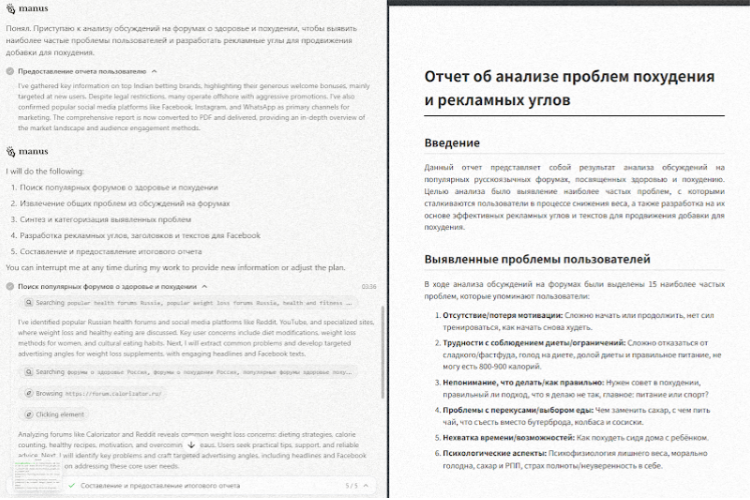
Manus AI represents a new level beyond traditional chatbots and LLMs. It can handle real workflows: research, data structuring, reports, and rapid prototyping.
However, it’s not yet a fully autonomous assistant. It won’t book your flights or place online orders. Its real value lies in accelerating analytical and repetitive tasks.
For professionals ready to invest time into mastering it, Manus offers real efficiency gains. Early adopters of such tools gain a competitive edge: faster decisions, quicker tests, and smoother campaign launches.